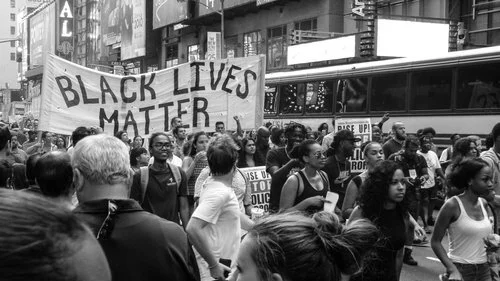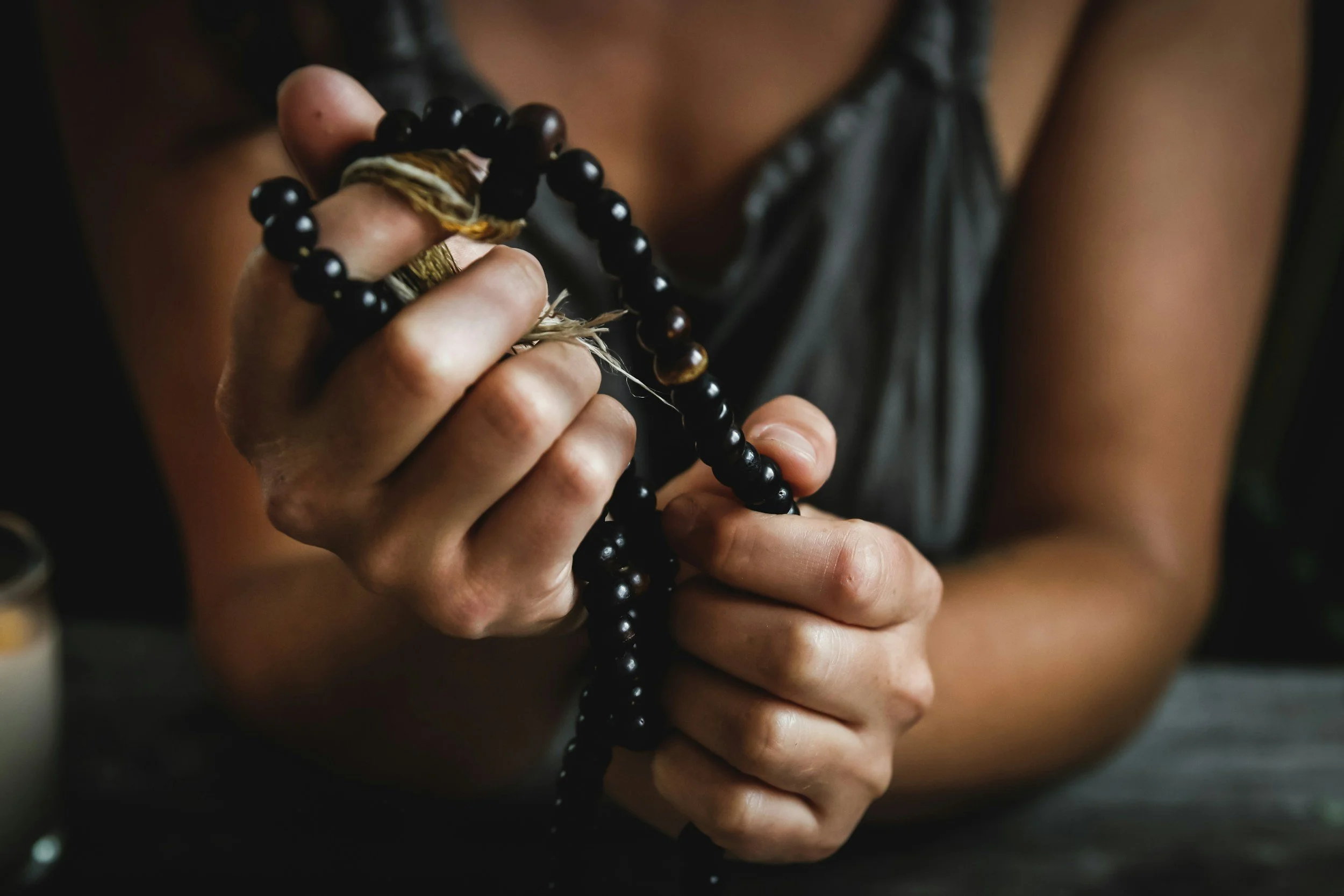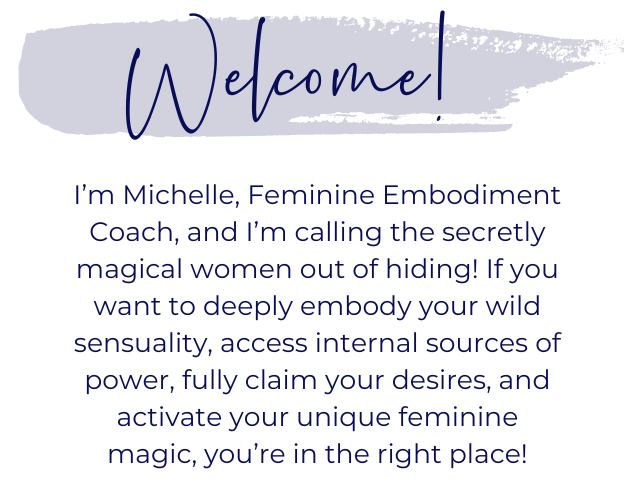5 Ways Embodiment Can Help Dismantle Racism
I need to begin by saying that I’m not an anti-racism educator, and this isn’t a piece about anti-racism. There are many, MANY black leaders and people of color who are educating and providing resources on racism. I encourage you to listen to their voices and follow their lead about how to dismantle systems of oppression.
What I want to offer you today is about how to engage with the work of anti-racism on a personal level, as an embodied woman. How to metabolize and digest uncomfortable feelings around the topic of racism so that real change can happen, both internally and externally.
Embodiment is for all humans, regardless of identity. My work and my offerings are for all womxn, of all races, ethnicities, gender identities and sexual orientations.
That said, in this article, I am mostly speaking to white women about how embodiment relates to confronting and unpacking our whiteness and privilege. Clearly, it’s not my place to educate women of color on how to process their racial trauma, nor do women of color have the same internal work to do.
If you’re a woman of color reading this, and you are interested in embodiment, I wanted to let you know that somatic and embodiment practices can be very supportive in dealing with trauma, including racial trauma. Resmaa Menakem (@resmaamenakem) is doing powerful work on this for both people of color and white people. (There are others, but I don’t want to overwhelm. If you want support in finding resources, please contact me.)
Everyone should read Resmaa’s book, My Grandmother’s Hands: Racialized Trauma and the Pathway to Healing Our Hearts and Bodies. He also has a free online course on Racialized Trauma that everyone should take advantage of, available here.
It’s my belief that DISembodiment plays a huge role in perpetuating racism and systems of oppression. A disembodied over-culture is capable of dehumanizing people, as was and is still done to people of color. A disembodied over-culture allows this to continue despite undeniable evidence of a problem.
When we are disembodied:
We are numb and desensitized to our bodies; most of our energy is up in our heads.
We don’t know how to move through uncomfortable feelings and sensations.
We don’t know what to do when our nervous systems are activated in fight or flight.
We go quickly into armoring and defensiveness.
We do not allow ourselves to feel our own emotional + spiritual pain, and if we can’t feel our own pain, we can’t feel anyone else’s.
We become frozen, perpetuating oppressive systems through inaction.
If you’re sensitive and empathetic, as most people reading this likely are, you might be feeling all the things right now – you might be feeling TOO sensitive. You might deeply desire cultural change, but you’re feeling flooded and overwhelmed and unsure what to do or where to begin.
Embodiment is learning how to build capacity and hold yourself in intense emotions so they can become fuel for your actions. Instead of armoring, numbing, or freezing, you are able to digest intense emotions and move forward into doing from a place of empowerment.
With that in mind, I want to share 5 ways that embodiment can help dismantle racism and oppression.
1. Embodiment means getting out of our heads and into our bodies.
Racism isn’t just an idea, and it’s not something we can work through simply by thinking about it. Systems of oppression play out through our bodies, our feelings, and our actions.
Even if we think we don’t identify with racism, it’s baked into our culture, it’s in the air we breathe, it’s programmed into our society and our media. It’s in our bodies on a cellular level.
And it’s at the level of our bodies where we need to begin unraveling it.
Intellectual discussion is, of course, a crucial foundation of anti-racism, and the intellectual work of many scholars and people of color is necessary and indispensable.
But intellectual ideas provide a convenient shield behind which well-meaning white people can engage from a safe distance, without effecting any real change.
Intellectualizing means that theories and ideas are primary, and feelings are less important than thinking. Intellectualizing allows us to avoid feeling the fiery or tender layers of emotions wrapped up in unpacking our whiteness, our privilege, and our own internalized racism.
Intellectualizing the problem is perpetuating systemic racism. It’s a way of keeping racism at arm’s length. A way to avoid doing the deeper, messier work of real transformation.
Metabolizing these intellectual ideas in our own bodies is the real work that needs to happen.
We cannot realize the collective change we want to see without change within ourselves, inside our bodies. And the more we can shift inside ourselves, the more we will see change reflected out there, in our communities and culture.
2. Embodiment means developing greater sensitivity.
Our over-culture tells us we should avoid pain at all costs. Our cultural memes teach us that the best thing to do is to numb and distract ourselves from uncomfortable feelings. Don’t look there.
The engine of consumerism tells us what to do – and buy – to get happy. That if you’re not happy, you’re doing something wrong… you must need fixing, or buying something new that will finally get you out of pain.
You can even see this mindset in some progressive, “woke,” and spiritual communities where you hear messages like “avoid being low vibe,” and “focus on light and love.” The message is to try to quickly get yourself out of “low vibe” states – to get happy – but instead of buying a new iPhone, you use crystals and affirmations.
This is what people mean when they talk about spiritual bypassing: bypassing the real messy work of change to go directly to the end-goal of unity and love.
Now, don’t misunderstand me, I’m all-in for crystals and affirmations! I believe we are all one. I believe love overcomes all. What I want to challenge is how this mindset is sometimes used to avoid uncomfortable emotions.
Sitting in the fire of our pain is where we find the alchemy of real transformation. Skipping over the hard part leads to a false equivalence.
When we turn down the volume on our pain, we close the aperture on our ability to sense and feel all of our lives. We become numb, less sensitive, less able to feel ourselves.
And when we can’t feel ourselves, we can’t feel other people.
When we are numb it’s easier to stay in our bubble, hiding and doing nothing, letting the problem be “out there” for other people to worry about.
When we are numb and distracted, nothing changes.
Our over-culture would have us all stay desensitized and disembodied because it’s easier to keep us well-mannered and compliant. To keep us not making too much noise or rocking the boat.
Many of my clients are women who know this box of accommodating politeness all too well. They are women who, at some point, realize they have to break free of that conditioning to claim their space, their voice, and the power of their full spectrum selves.
Because when we stay polite and acquiescent, nothing changes.
But when we open our hearts and become more sensitive to what’s happening in our bodies, we can allow ourselves to look right at the pain. We can FEEL something when we see oppression. We can no longer stay polite and distracted and do nothing.
When we become more sensitive, we can FEEL where our own tension, contraction, sadness, guilt, and rage show up. Which is necessary because that’s our growth edge. That’s where the real inner change happens.
Our sensitivity and ability to feel our full spectrum of emotions is what fuels transformation, both within ourselves, and out there in the world.
3. Embodiment means developing the capacity and stamina to stay with uncomfortable emotions long enough to process and metabolize them instead of pushing them away.
When you turn up the volume on your sensitivity, you don’t have to jump straight into the deep end. You want to build stamina and capacity incrementally over time, coupled with lots of self-care so that you don’t just stay in a negative spiral all the time and end up burned out, with your own mental health suffering. Nobody is served by that.
It’s important to go slowly and recognize this is a journey, not an overnight change.
Having the stamina and capacity to be with uncomfortable emotions means you can allow them to be digested and completed in your system. This is how you work through your own shadow.
This is how we do the work of dismantling our own internalized racism. The racism that is baked into our culture. The racism that we don’t even see because it’s so ingrained in the culture.
None of us are born with racist ideas, but over time, we internalize the systemic racism that’s happening all around us. By the time we are adults, we have (largely non-conscious) beliefs, thoughts, and assumptions that live in our bodies and impact our actions. And unpacking systemic racism is very confronting to those deeply ingrained beliefs, which is uncomfortable.
It’s uncomfortable to acknowledge and confront our own white privilege.
It’s uncomfortable to admit that even though our intentions are good, the impact of our actions or inactions may have caused harm.
It’s uncomfortable to have our worldview challenged.
It’s uncomfortable to speak up and not stay silent.
It’s uncomfortable to not stay ignorant and distracted any more.
It’s uncomfortable to feel the guilt and sadness at what people of color have experienced as a result of systemic racism.
At first, before you develop sensitivity, you might not even realize you are uncomfortable. You might just become defensive or turn to distractions, to avoid looking at the problem, and stay in the do-nothing place that perpetuates systemic racism.
When you become sensitive enough to be aware that you’re feeling uncomfortable tension in your body, then you can develop the capacity to stay with that long enough to digest it.
Sensitivity and awareness so you can feel it + stamina and capacity to stay with it and not push it away.
This is how we get better at noticing when our internalized racism is showing up and being challenged, and how we begin to go about unlearning it.
This is how we process the emotions and sadness we feel in response to the pain of people of color’s lived experiences, and let it become fuel for our activism for social change.
4. Embodiment means developing your own internal resources for safety.
Processing uncomfortable emotions in a productive way depends on being able to source a somatic sense of safety within your body.
Embodiment means learning the skills of cueing safety in your body and nervous system so that you can recognize when your nervous system is activated into fight/flight, and you know how to calm your nervous system response.
When we practice these skills, we deepen the neural pathways for our nervous system to get out of fight or flight when there’s no actual threat to our lives.
This means you can process your emotions and reactions in appropriate ways and spaces instead of centering attention back on your own guilt, shame, anger, or overwhelm.
It’s important to focus on the problem of systemic racism, and the immediate experiences of people of color, and not the many emotions white people confront in discussions about racism.
Even if it’s unintentional, white tears or white fragility only serve to perpetuate systemic racism and keep us frozen in inaction.
Developing embodied resources for safety also means you can hold yourself in processing uncomfortable emotions. You can avoid getting overwhelmed or flooded when confronted (by other people or by ideas). You understand how to move through these emotions in a constructive way instead of being flattened by them.
It means being able to move forward into action from a place of empowerment, fueled by your whole self, instead of acting from your wounding or your shadow.
5. Embodiment means orienting towards pleasure and expansion.
I believe that the work of transformation isn’t only about being uncomfortable. It isn’t only about churning up the dark matter where our shadow lives and wading through the chaotic and painful places.
It’s important to be aware of the nuances around racism and pleasure in this discussion. Generally speaking, systemic racism means that white people have an excess of resources and pleasure while others don’t have enough.
This revolution requires a new relationship with pleasure. One in which we are able to create abundance, where everyone has enough. Pleasure isn’t owned by a few entitled people. It is the aliveness and vitality that animates our BE-ing.
We are full-spectrum creatures, and embodied transformation depends on pleasure and expansion as much as it does on moving through challenges.
Indeed, denying our full, sensually alive selves makes it more likely we will be in conflict with each other.
This is definitely not about spiritual bypassing, which I talked about above. It’s about making space for enjoyment alongside healing. I believe it’s important to balance moving through pain with moving towards what we are expanding into.
I love adrienne maree brown’s book Pleasure Activism: The Politics of Feeling Good. She writes,
“Satisfaction, joy, and erotic aliveness can bring about social and political change.”
We don’t have to heal every bit of shadow before we create the more beautiful world our souls long for. It’s probably not even possible to do so. Racism is a multi-generational challenge, and dismantling systemic racism is a lifelong journey. But it doesn’t have to be a journey only of pain and heartbreak.
We can and should learn to experience liberation and social justice as pleasurable experiences!
We can and should cultivate pleasure in our activism, enjoyment in our engagement with anti-racism, and expansion in our experience of shifting cultural norms.
Seeking out and creating shared experiences of pleasure is also healing. Dance, art, community, joy, and fun are restorative.
Embodiment means we literally become what we practice. And we’re always practicing something.
I believe it’s valuable to practice being in pleasure, expansion, and enjoyment as we are bringing about this revolution. It’s necessary to embody that which we desire to create.
Cultivating pleasure moves us towards collective liberation.
++++++++++++++++++++++++++++++++++++++++++
I’m curious to know how this lands for you, and what you’re feeling in your body in response. I’d love to keep the conversation going, so please leave me a comment or send me an email. I want to hear from you!
PS: Did you know I have a free 10-minute meditation that helps you develop a sense of safety in your body? If you’re interested you can download it here.




















